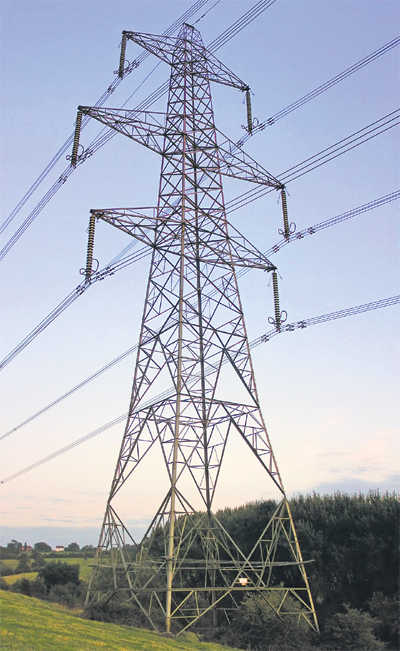
Bhupinder Singh & Malkit Singh
Bhupinder Singh & Malkit Singh
Power sector experts
While state-owned power distribution companies are running into losses resulting into mounting debts, private distribution companies are making profits and creating reserves. It is generally perceived that private sector companies are professionally managed, which the public sector lacks, and is the prime reason for the profitability of private enterprises. But, is it the only factor contributing to their profitability? A comparative analysis of the factors affecting the working of the state owned and private distribution companies in the country throws some enlightening facts.
The Electricity Act of 1948 was replaced by Electricity Act of 2003 to bring in competition by private sector participation in the power sector to ultimately benefit the consumer. Section 61 of the 2003 Act states that, tariff shall be fixed in such a manner that the cost of electricity is recovered in a reasonable manner and the consumer's interest is safeguarded as well. However, the tariffs in areas where the electricity distribution has been privatised are higher in comparison to the tariffs of state companies, thus, forfeiting the objective of the Act.
Privatisation in cities only
The private distribution companies are operating in Mumbai, Kolkata, Delhi, Ahmedabad, Surat and some franchisee-operated city areas, needing smaller infrastructure. The state companies operate in cities as well as in sparsely populated rural areas where huge infrastructure for supplying electricity to far-flung remote areas is required. For example, the private Calcutta Electricity Supply Company (CESC), which is the oldest company in the country having started operations in 1897, serves 28 lakh consumers with 0.2 lakh circuit km of line length compared to 164 lakh consumers served by West Bengal State Distribution Company having 4.8 lakh km circuit line length. RInfra having line length of only 0.1 lakh circuit km serves 30 lakh consumers in Mumbai compared to 231 lakh consumers served by Maharashtra State Electricity Distribution Company maintaining line length of 9.8 lakh circuit km. Higher manpower and resources are required to maintain larger line lengths.
Comparative tariff
Owing to smaller line lengths and other operational advantages in city areas, the aggregate transmission and commercial losses of private companies are lesser than those of state companies. The losses of Maharashtra are in the range of 21 per cent compared to 13 per cent of Mumbai city. In West Bengal, losses are in the range of 30 per cent compared to around 15 per cent of Kolkata city. Further, political interference faced by state companies adversely affects their operational efficiency, whereas the private companies are generally insulated from such interference. The state companies are burdened with debts which results in higher debt servicing costs compared to private companies.
With these advantages, tariffs of private companies should be lower than those of the state companies, but they present a contrary scenario. The private distribution company in Mumbai charges more than Rs 9 per unit followed by Delhi at Rs 7.35 per unit and Kolkata at Rs 7.02 per unit. In comparison, the state-owned companies of Gujarat and Andhra Pradesh, whose losses are below 15 per cent as in case of private companies and also have thermal as the main source of power, charge less than Rs 6 per unit. The tariff charged by PSPCL in Punjab is Rs 6.33 per unit and losses15 per cent.
Mounting debts of state companies
Inadequate recovery of the cost of electricity by the state companies owing to lower tariffs forces them to resort to borrowings to meeting their operational expenses, resulting in their mounting debts. Most state companies, except Gujarat, are reeling under huge debts. In comparison, the private companies are able to generate sufficient reserves due to higher tariffs. To illustrate, if the tariff of state-owned PSPCL was equated with the tariff of the private BSES Rajdhani Company operating in Delhi, then, in the current year, PSPCL would have generated a profit of around Rs 4,000 crore instead of making a loss of around Rs 800 crore.
As per the Uday Scheme, the state governments have to bear the burden of outstanding debts of state companies, thereby putting their own finances in disarray.
Electricity Amendment Bill, 2014 impact
The Central government introduced the Electricity Amendment Bill, 2014 in Parliament which shall further promote private sector participation in distribution by introducing the concept of supply licensee by segregating carriage and content. The supply licensees, mostly private entities, shall confine their operations to city areas so as to make profits with minimum encumbrances and the financial position of distribution licenseed responsible for maintaining wires in city and rural areas shall deteriorate. Private players’ entry in the distribution sector is likely to make power costlier even for industrial consumers.
There is an illusion in the government circles that privatisation is the panacea for the ills facing the distribution sector, whereas in reality, it has led to higher tariffs for the consumers. Higher tariffs lead to an increased subsidy burden of the state governments and the subsidy burden of other consumers increases. Since electricity drives economy, an efficient state-owned distribution company stands guarantee for supplying quality and affordable electricity to all sections. The state companies managements have a responsibility towards ensuring organisational efficiency in the benefit and economic prosperity of the state.



























